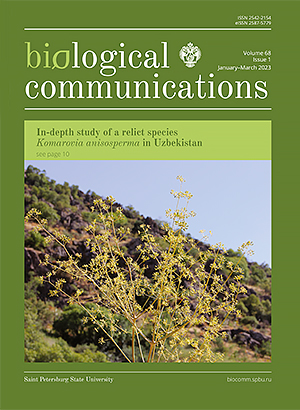Using DNA markers to reconstruct the lifetime morphology of barley grains from carbonized cereal crop remains unearthed at Usvyaty Settlement
DOI:
https://doi.org/10.21638/spbu03.2023.101Abstract
Research on taxonomic and genetic diversity of cultivated plants provides valuable data that help to clarify how the flora of cultivated plants was formed in a particular region. Paleogenetics, a discipline that developed at the intersection of molecular biology, archeology and genetics, helps to explore plant origin and changes in plant genotype during evolution. By the 12th century, the economy of medieval Northern Russia was based on a developed farming culture. Tracing the origin of its constituent agricultural traditions is an important fundamental task. The objective of this work was to study and identify the species affiliation of carbonized fossil remains of plants that grew in the Russian Northwest in the 12th century using morphological and molecular genetic methods. The results of the morphological analysis of grain fossils showed that most of the unearthed plant material was barley. Other cereals, such as wheat, rye and oat, were also observed. Molecular genetic studies helped to clarify the species affiliation of partially destroyed grains and reconstruct their lifetime morphology.
Keywords:
H. vulgare, barley, Nud, aDNA, naked
Downloads
References
Downloads
Published
How to Cite
License
Articles of Biological Communications are open access distributed under the terms of the License Agreement with Saint Petersburg State University, which permits to the authors unrestricted distribution and self-archiving free of charge.





